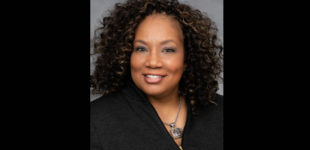Study shows N.C. parents praise summer learning programs, but many out of reach for children

WASHINGTON, DC — After a year of isolation, learning loss, and trauma for many students, this summer will be especially important for young people to begin to heal, re-connect, and make learning gains. Yet a study released recently finds that even before the pandemic, some 400,713 North Carolina children and youth were without access to summer learning programs. This was 33% of North Carolina children not in a summer program whose parents wanted to enroll them. In fact, for every North Carolina child in a summer learning program in 2019, one more was waiting to get in.
Time for a Game-Changing Summer, With Opportunity and Growth for All of America’s Youth, a household survey commissioned by the Afterschool Alliance and conducted by Edge Research, finds that nearly half of families nationally (47%) and 47% in North Carolina report at least one of their children participated in a summer program in 2019. A total of 12.6 million students – or 22% of the country’s K-12 children – participated in a structured summer experience in 2019, as did 415,890 North Carolina children, or 26% of the state’s K-12 kids. An overwhelming majority of parents are satisfied with their child’s summer learning program.
The study also finds high unmet demand nationally, with children in low-income families most likely to be left behind. Cost is the barrier to enrollment North Carolina parents cite most often; 43% of those who did not have a child in a structured summer experience in 2019 cited cost as the reason. A structured summer experience is defined to include a summer learning program, sports program, summer camp, summer school, or summer job or internship, but is different from child care.
Participation in summer learning programs dropped significantly in 2020 as the pandemic hit. Just 34% of families across the country had a child in a structured summer experience that year, and many kids who did take part participated virtually.
“Summer learning and afterschool providers in North Carolina have been doing heroic work during the pandemic,” said Afterschool Alliance Executive Director Jodi Grant. “This research tells us that unmet need for summer learning programs was a significant problem even before COVID-19 struck. The stakes are even higher now, with so many of our children needing academic help, social and emotional support, and opportunities to engage with peers and caring adults, be physically active, and more. This summer, all students need access to summer learning programs that allow them to have fun, be kids, and accelerate their learning through enriching hands-on activities. Cost must not remain a barrier to participation. Every student needs an opportunity to engage, heal, learn, and grow this summer.”
“Summer learning programs enjoy extraordinary support from parents, with 97% of North Carolina parents reporting they were satisfied with the structured summer experience their child attended and 91% saying they favor public funding for summer learning opportunities for students in communities with few opportunities for children and youth,” said Dr. Sheronda Fleming, director of the North Carolina Center for Afterschool Programs. “Our goal for this summer is to make these essential programs available to all children and youth in North Carolina. Students and families are relying on us to help kids re-engage, address anxiety and learning loss, and re-discover their passion for learning. That’s why we are bringing together businesses, nonprofits, museums, community-based organizations, colleges and universities, and others to help us make summer learning programs more available and even more impactful here in North Carolina this year.”
Time for a Game-Changing Summer is based on responses from more than 29,500 U.S. families, including 885 families in North Carolina. It includes national-level findings from smaller surveys of parents and program providers conducted in summer and fall of 2020 and spring of 2021, offering a snapshot of how children and youth spent their summers before and during the pandemic. In important respects, North Carolina results mirror the national survey findings, which include:
*Unmet demand for summer experiences is high. Nearly 14 million children in the United States whose parents wanted to enroll them did not have access to a summer program in 2019. More than half of families without a child in a summer program report that they would have liked to have had one available to them that year. In 2020, during the pandemic, 48% of families without a child in a summer program would have enrolled their child if a program had been available.
*There are troubling inequities in access to summer programs. While 27% of children in higher-income families participated in a structured summer experience in 2019, just 14% of students in families with low incomes did. Approximately three in four children in a structured summer experience (74%) are from higher-income families, compared to only one in four children (26%) from lower-income families.
*Cost is a barrier to participation. Two in five parents who did not have a child in a structured summer experience (39%) did not enroll their child because programs were too expensive. Among children not enrolled in a summer program, 35% of children in households with low incomes would have been enrolled in a summer program in 2019 if one were available, compared to 28% of children in higher-income households.
*The cost of programs varies by program type and place. The average cost reported by families who pay for activities nationally ranges from around $758 for voluntary summer programs to more than $900 for STEM camps.
*Parents prioritize life skills for summer learning and want the summer experience to be different than the school year. Three in four parents (75%) value keeping their child from losing academic ground in choosing their summer activity, but even more – nine in ten – report that opportunities to build life skills (94%), be physically active (92%), and experience a variety of activities (90%) are important factors in selecting their child’s summer activities.
*Priorities vary by family income. Low-income parents place a greater emphasis on reducing risky behaviors (23 percentage point difference) and snacks and meals (21 percentage point difference) than families with higher incomes.
“Quality afterschool and summer programs are essential to student success in school and life,” Grant added. “Lawmakers recognized that by including significant one-time funding for afterschool and summer learning programs in the American Rescue Plan. States must ensure that funding is well-used. All our children and youth need ready access to enrichment and academic opportunities this summer and during the coming school year. This study shows unacceptable levels of unmet need, especially for low-income families. This summer we have a responsibility to meet the need – and when we do, children and youth, families, communities, and our country will be stronger.”
The national and North Carolina America After 3 p.m. reports, and accompanying data, are available at www.afterschoolalliance.org.











